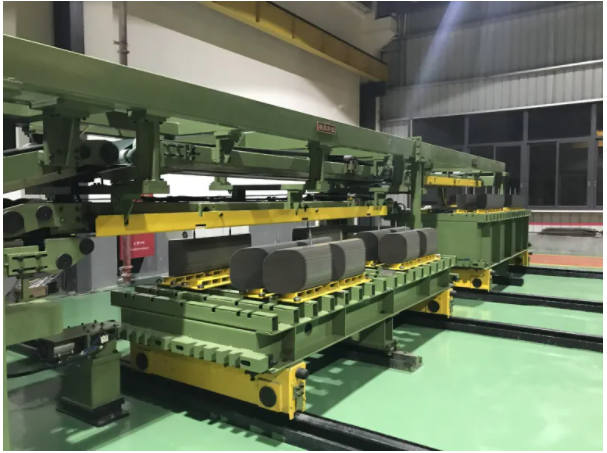Transformers are integral components of electrical power systems, enabling the efficient transfer of electricity from power plants to our homes and businesses. These devices consist of various parts, the primary one being transformer laminations. Transformer laminations play a crucial role in energy transfer and help minimize energy losses. This article aims to explore the composition, materials, and manufacturing process of transformer laminations, shedding light on their importance in the field of electrical engineering.
Understanding Transformer Laminations:
When referring to transformer laminations, it's important to understand their purpose within the device. In transformers, laminations are thin, insulated metal sheets that form the core of the device. These laminations are stacked together, creating a closed magnetic circuit that facilitates energy transfer. The primary function of transformer laminations is to minimize eddy current losses, which can significantly impact the device's efficiency.
Materials Used in Transformer Laminations:
The materials utilized in the construction of transformer laminations are carefully chosen to address specific electrical and magnetic requirements. The most commonly used material for transformer laminations is electrical steel, also known as silicon steel or transformer steel. This alloy consists of iron with a small amount of silicon (between 1% to 4%). The introduction of silicon provides enhanced magnetic properties, reducing energy losses due to eddy currents.
Manufacturing Process of Transformer Laminations:
The production of silicon steel transformer laminations involves a complex manufacturing process to ensure optimal efficiency and performance within the electrical power system. The initial step involves the selection of electrical steel with the desired composition. The chosen steel is then subjected to annealing, a heat treatment process, to improve its magnetic properties.

Following annealing, the steel is processed through precision machinery, where it is cut into individual lamination sheets. These sheets are insulated using varnish or oxide layers to minimize electrical conductivity between adjacent layers. The insulated lamination sheets are then stacked together using mechanical fixations to form a solid core for the transformer.
Core Types and Design Considerations:
Transformer cores can be of various types, based on the design requirements and applications. The most common type is the laminated core, which uses silicon steel transformer laminations, as discussed earlier. Laminated cores offer increased efficiency, reduced energy losses, and improved performance compared to solid or powdered iron cores.
Another type of transformer core is the toroidal core, which eliminates air gaps, reducing magnetic losses and physical vibrations. Toroidal cores are often used in high-frequency applications due to their superior magnetic characteristics. Additionally, amorphous alloy cores are gaining popularity due to their excellent energy efficiency properties, although they are more expensive than traditional silicon steel laminations.
When designing transformer laminations, there are several factors to consider. The core shape and dimensions must be optimized to minimize magnetic flux leakage while ensuring efficient energy transfer. Additionally, core thickness, insulation materials, and insulation thickness are crucial considerations to minimize eddy current losses and maximize efficiency.
Impacts of Transformer Laminations on Efficiency:
Transformer laminations significantly influence the efficiency and overall performance of electrical power systems. The presence of laminations reduces energy losses due to eddy currents, which can be substantial in the absence of proper insulation. By utilizing the right materials and ensuring precise manufacturing processes, the efficiency of transformers can be significantly improved.
Efficiency improvements in transformers have a direct impact on energy conservation, reduced costs, and environmental sustainability. With the ongoing advancements in material science and manufacturing techniques, the energy losses associated with transformer laminations are continuously being reduced, contributing to increased efficiency and reliability in the power sector.
In conclusion, transformer laminations form the backbone of electrical power systems by facilitating the effective transfer of electricity. These laminations, made primarily from electrical steel, minimize energy losses due to eddy currents, thereby increasing transformer efficiency. The careful selection of materials, precise manufacturing processes, and design considerations collectively make transformer laminations a critical component in the realm of electrical engineering. By constantly striving for improvements in efficiency, engineers and researchers are ensuring a more sustainable and reliable energy future.
As one of the best transformer laminations suppliers in China, CANWIN equipment manufacturing deploys an innovation chain through the industrial chain and specialized in transformer laminations for sale.We has passed the system certification of ISO9001, ISO14001 etcThe company is a key enterprise in the field of electric power electrical equipment manufacturing in China, and a core professional equipment supplier of state grid, China southern power grid and many listed companies in the electric power industry. Its products are exported to countries and regions in Asia, Africa, Latin America, Europe and the United States.